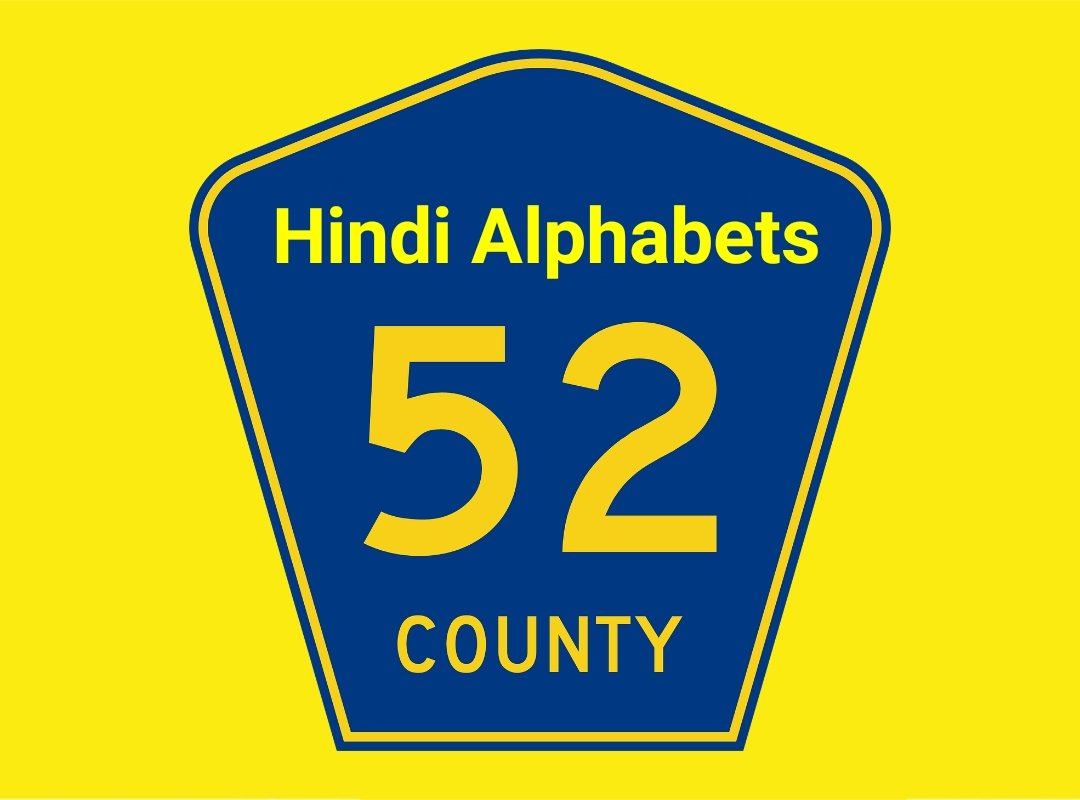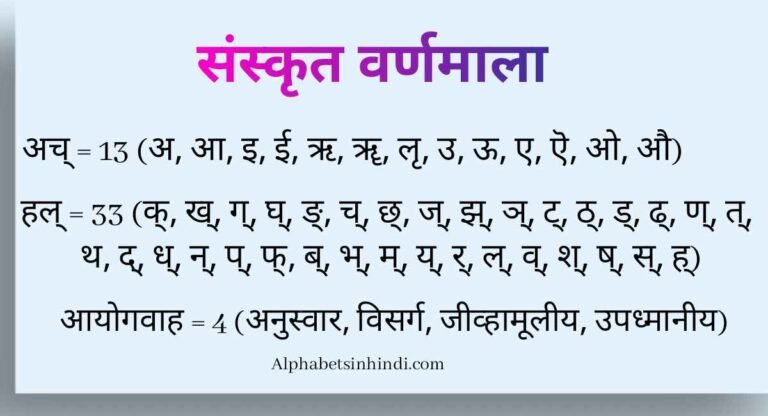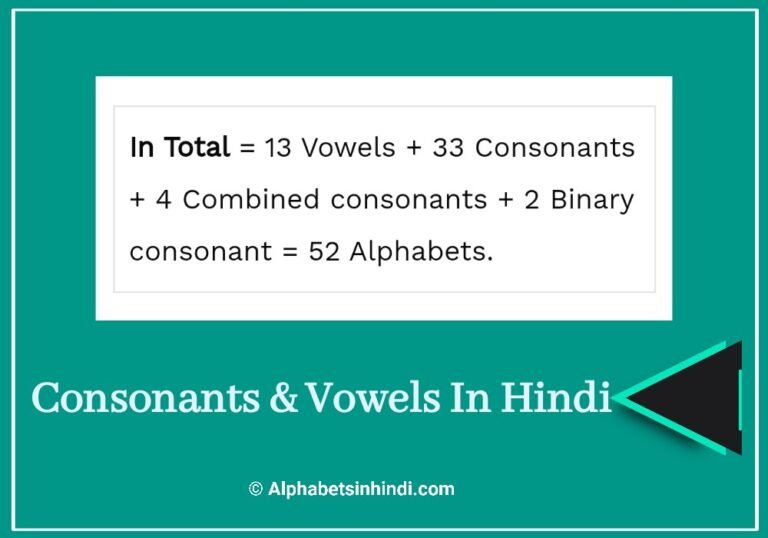Did you know that Hindi, one of the most widely spoken languages in the world, has not one but two different ways to count its alphabets? It’s true! If you’ve ever wondered how many alphabets are in Hindi, you’re about to learn something fascinating.
In this article, we will delve into the intricacies of Hindi script and pronunciation to uncover the truth.
Brace yourself for an enlightening journey through the 45 letters based on pronunciation and the 52 letters based on writing. Get ready to have your mind blown as we explore this captivating linguistic phenomenon!
What is the difference between the alphabet and letters in the Hindi language?
In Hindi, the terms “alphabet” and “letters” are often used interchangeably because they refer to the same fundamental components of the script. However, there is a subtle difference between the two terms:
Alphabet (वर्णमाला – Varnamala): The Hindi alphabet, or “Varnamala,” refers to the entire set or collection of characters that make up the script. It includes all the vowels (स्वर – Swar) and consonants (व्यंजन – Vyanjan), along with any special characters or diacritics used in Hindi writing.
Letters (अक्षर – Akshar): Letters, on the other hand, are individual characters or symbols within the Hindi alphabet. Each letter represents a specific sound or combination of sounds in the language. There are 13 vowels and 39 consonants in the Hindi alphabet, making a total of 52 letters.
So, while “alphabet” refers to the entire set of characters used in Hindi script, “letters” specifically pertain to the individual symbols or characters within that alphabet. Both terms are essential for understanding and writing in the Hindi language.
Hindi Alphabet: 45 vs. 52 Characters – Pronunciation and Writing
In the Hindi script, there are variations in the count of alphabets depending on whether you consider pronunciation or writing. Let’s break it down:
Based on Pronunciation (45 Alphabets):
- There are 10 vowels: अ आ इ ई उ ऊ ए ऐ ओ औ, along with three additional characters – ऋ, अं (Anusvara), and अः (Visarga).
- There are 35 consonants: क ख ग घ ड़, च छ ज झ ञ, ट ठ ड ढ ण, त थ द ध न, प फ ब भ म, य र ल व, श ष स ह.
- The total comes to 10 vowels + 35 consonants = 45 Alphabets.
Based on Writing (52 Alphabets):
- There are 13 vowels: अ आ इ ई उ ऊ ए ऐ ओ औ, ऋ, अं (Anusvara), and अः (Visarga).
- There are 35 consonants: क ख ग घ ड़, च छ ज झ ञ, ट ठ ड ढ ण, त थ द ध न, प फ ब भ म, य र ल व, श ष स ह.
- Additionally, there are 4 combined consonants: क्ष त्र ज्ञ and श्र.
- There are also 2 binary consonants: ड़ ढ़.
- The total comes to 13 vowels + 35 consonants + 4 combined consonants + 2 binary consonants = 52 Alphabets.
So, the difference between these counts is 7 alphabets, which includes 3 extra vowels (ऋ, अं, अः) and 4 combined consonants (क्ष, त्र, ज्ञ, श्र) that are present in the written script but not counted in pronunciation.
Conclusion Point
In conclusion, the question of how many letters are in the Hindi alphabet has been addressed. Depending on whether we consider pronunciation or written characters, the answer varies.
In terms of pronunciation, there are 45 alphabets, whereas in written form, there are 52 alphabets. This distinction highlights the complexities and nuances of the Hindi script.
In essence, the collection of organized characters in Hindi, whether it’s 45 or 52, is referred to as the alphabets or Varnamalas.
This distinction underscores the rich and intricate nature of the Hindi language and script, which plays a vital role in preserving its cultural heritage and linguistic diversity.
FAQs
What is the difference between the alphabet and letters in the Hindi language?
In Hindi, “alphabet” and “letters” are often used interchangeably. However, there’s a subtle difference. The “alphabet” (वर्णमाला – Varnamala) refers to the entire set of characters, including vowels (स्वर – Swar) and consonants (व्यंजन – Vyanjan), while “letters” (अक्षर – Akshar) are individual characters within the alphabet, representing specific sounds.
How many letters are there in the Hindi alphabet?
The Hindi alphabet consists of 52 letters. It includes 13 vowels and 39 consonants. The count may vary based on whether you consider pronunciation or writing.
What is the difference between the pronunciation and writing of Hindi characters?
Based on pronunciation, Hindi has 45 characters, including 10 vowels and 35 consonants. In writing, it has 52 characters, which include 13 vowels, 35 consonants, 4 combined consonants, and 2 binary consonants.
Can you explain the extra vowels and combined consonants in Hindi writing?
In Hindi writing, there are three extra vowels (ऋ, अं, अः) and four combined consonants (क्ष, त्र, ज्ञ, श्र) that are not counted in pronunciation. These characters are used for specific purposes in written Hindi.
What is the significance of the Anusvara (अं) and Visarga (अः) characters in Hindi writing?
Anusvara (अं) and Visarga (अः) are special characters in Hindi. Anusvara represents a nasal sound, and Visarga indicates a slight breath. They are used to modify pronunciation and are vital for the proper pronunciation of words.
How do I learn to read and write in Hindi effectively?
Learning Hindi effectively involves mastering the alphabet, understanding pronunciation, and practising writing. Utilizing resources like textbooks, online courses, and language apps greatly aid your learning process.
Are there any online resources for learning the Hindi alphabet?
Yes, there are numerous online resources, including websites, YouTube tutorials, and language learning apps, that provide lessons and exercises for learning the Hindi alphabet.
What role does the Hindi alphabet play in learning the Hindi language?
The Hindi alphabet is the foundation of the language. To read, write, and communicate effectively in Hindi, a strong grasp of the alphabet is essential. It allows you to decode words and understand their pronunciation.
Is Hindi script the same as Sanskrit script?
The Hindi script, known as Devanagari, shares its origins with the Sanskrit script. While they have similarities, there are differences in usage and pronunciation, as Hindi has evolved as a distinct language.
Why is it important to understand the difference between pronunciation and writing in Hindi?
Understanding this difference is crucial for correct pronunciation and comprehension when learning Hindi. It ensures you can read and write the language accurately, avoiding common mistakes related to pronunciation and spelling.






